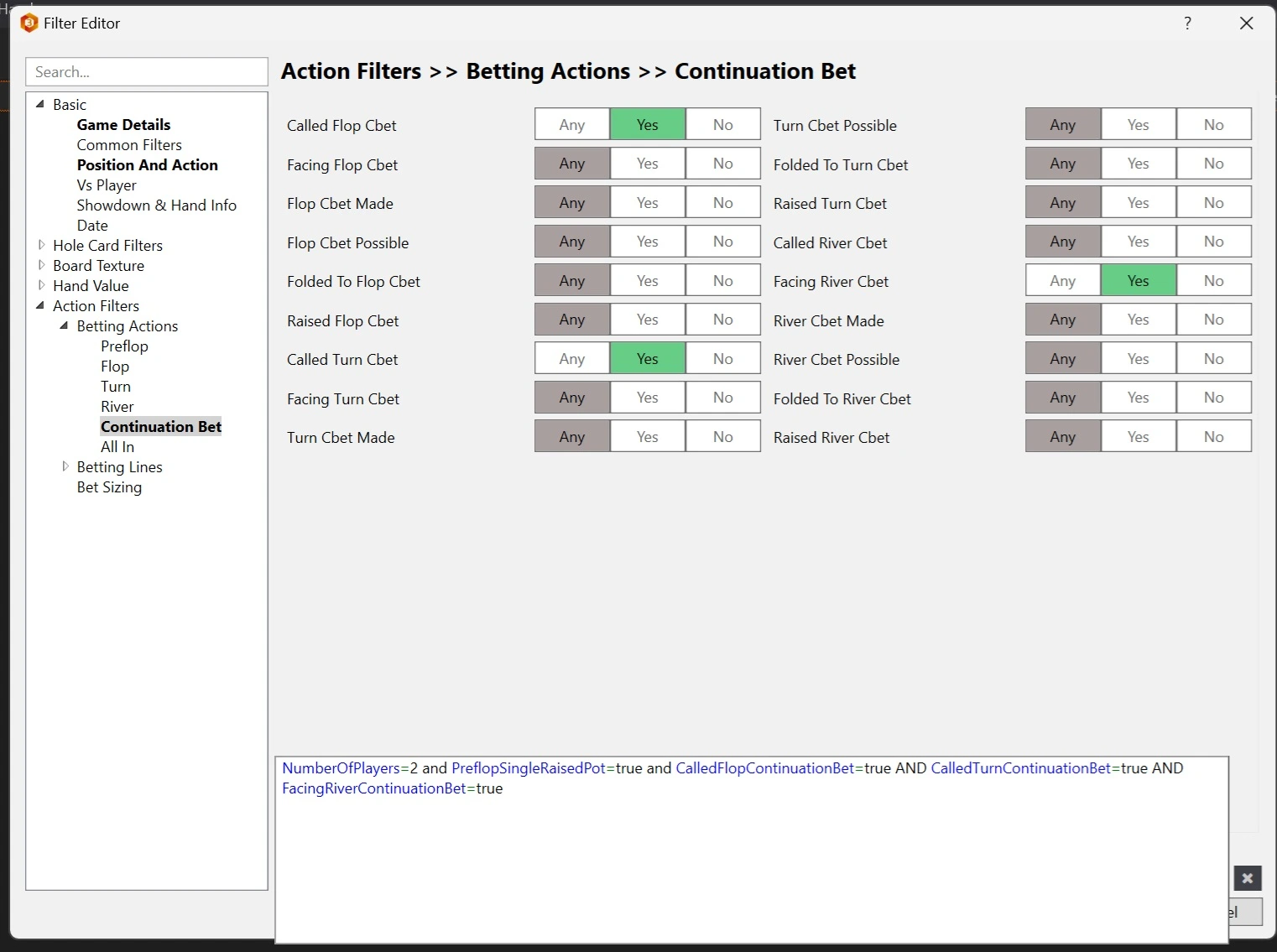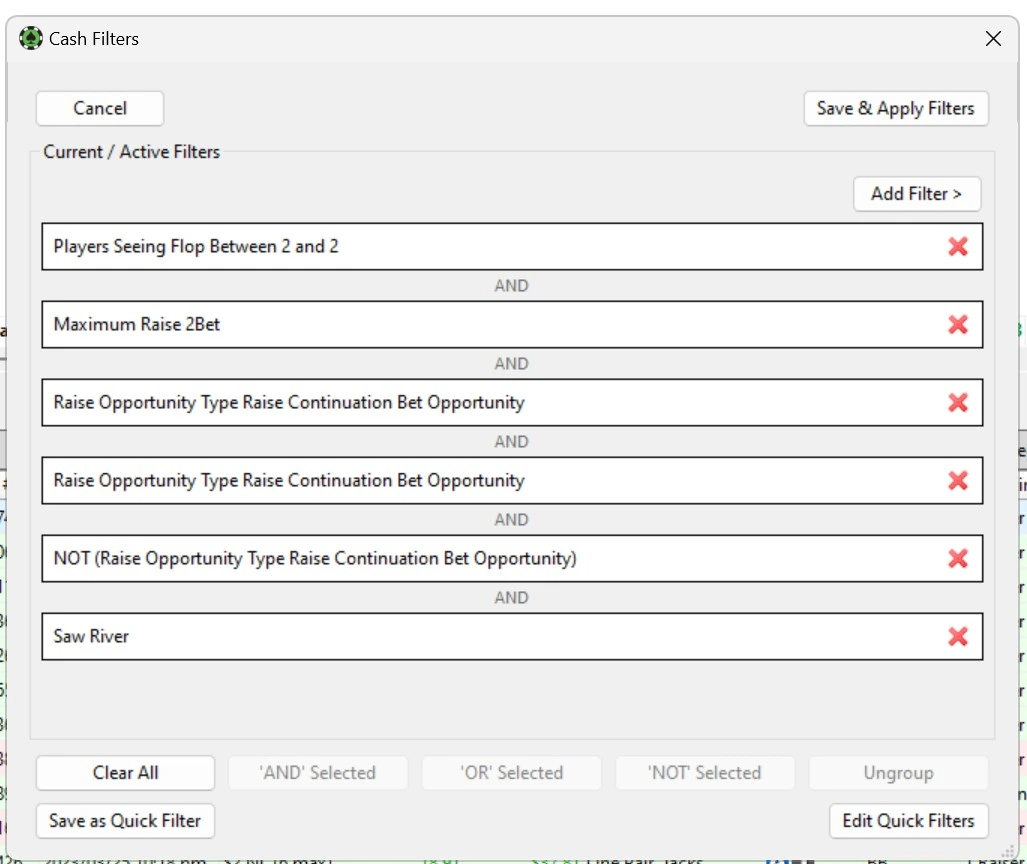How to Spot Poker Betting Patterns Across All Streets

Apr 30, 2025
•
1 min read
To understand is to perceive patterns.
- Isaiah Berlin
If you’ve made it here, you’ve seen our overview of poker and specific advice for developing your own winning strategy, street by street. Now that we’ve seen the details, let’s zoom back out one more time to look at the big picture.
This first installment of the last chapter will cover poker betting patterns from flop to river. You’ll learn an intuitive and simple way to extract information from the choices your opponents make so you always know what you’re up against.
Ready? Let’s do this!
Observation & Betting Patterns
In poker, understanding betting patterns is key to making informed decisions. Let’s consider a common scenario: with average 100bb stacks, most single-raised pots take about four bets to stack off. Now, think about the different ways those four bets can play out.
A typical pattern might look like this: a c-bet on the flop, followed by a raise and a call, then a bet and call on turn, and a jam on the river. Alternatively, the turn could feature a check-raise instead of the flop. These sequences of actions are what we refer to as betting patterns, or sometimes “lines.”
Common lines include the double or triple barrel. These start with a continuation bet, with the aggressor continuing to fire on the turn and, in the case of the triple barrel, also on the river.
👉 Below is an example of Hold’Em Manager 3 filtering for triple barrels:

Professionals categorize betting lines and use trackers to analyze player behavior. For example, bet, bet, check may suggest different hand strengths than bet, check, bet or check, bet, bet, even though each involves two bets.
So, how can you improve at reading betting patterns and understanding what they reveal?
The Instant Preflop Call
A single action in poker can reveal a lot. For instance, a quick preflop call, like the Big Blind instantly calling a raise or the Button snap-calling a 3-bet, often indicates a range requiring little thought. These players typically hold hands too weak to raise but too strong to fold.
Similarly, a “donk” bet on the flop (betting into the preflop aggressor) is often a sign of an inexperienced player. While some regs use this move strategically, it’s uncommon.
To understand the range behind a donk bet, filter your database for hands with this action. You’ll likely find it’s not particularly strong, especially with reasonable bet sizes.
True grinders will check their own database though. Winning players comb their data to get reads on their opponents. The exploits can be found when you peak at the humans you’re up against.
Lines Worth Investigating
Similarly, winning players filter their hand-history databases for betting lines across multiple streets, like bet, check, bet vs the bet, bet, check we mentioned earlier.
For example, you want to know if players in your games double barrel draws or check them on the turn. You want to know how your pool constructs their ranges for flop and turn check-raises as well.
Pattern-finding is the purpose of the mind and the construct of the universe.
- Agnes Denes
Back in the early online days, a 2+2 user coined the “Baluga Theorem.” It was a tested observation that turn check-raises were nutted. As a profit driven player, you want to know if that still applies. As you accrue volume, you’ll scan your hand history and know.
Probes and Bluffs
Other betting patterns to look for would be probes. Probe bets occur when you’re the PFR, check the flop or turn, then get the small lead into you on the turn or river. Consider how you might alter your c-bet strategy to exploit your findings.
If you find players in your games have too much air in their probes, thinking that your flop check shows weakness, you might consider letting your opponents build the pot when you have weak or medium strength hands.
Lines are Board Dependent
Bluff lines in poker are often tied to the board. Certain turns and rivers encourage more bluffs, turning a double barrel into a triple or a turn probe into a turn probe with a river follow-up.
For example, imagine the Big Blind defends a Cut-Off open, and the
Why? The Cut-Off likely c-bets flush and straight draws on a flop that favors them. A cunning player will certainly use that information along with scare cards to their advantage.
To save time, focus on common scenarios and ignore rare cases like river check-raises or raises. These situations happen infrequently and usually involve nutted hands, so they have minimal impact on your win rate.
But again, the goal is to help you develop these insights yourself. Use your database filters to analyze these lines and see how they play out in practice.
Software Protip
Hand2Note tends to be better for player-pool analysis than Poker Tracker or Hold’Em Manager, so when it comes to investigating betting patterns, that might make combing the data easier. However, the other two still make powerful tools in your quest.
👉 Below we see Poker Tracker 4 filtering for a double barrel line. Notice we use c-bet raise opportunities to look for spots where we faced c-bets.

When it comes to learning about your particular games, it helps to have a friend playing on the same site. You can feed your hand histories into one database and get an even larger sample of hands to analyze the competition.
Conclusion
In conclusion, after considering strategic differences between flop, turn, and river decisions, it’s important to look at everything together and spot common betting patterns found from the start of the hand to finish.
By constantly reviewing your hand-history database, you can get a precise understanding of hand strengths you find when facing common lines. This allows you to set certain thresholds in your strategy.
Use all the poker tools available to you to analyze the hands you play. Consider linking up with colleagues that play on the same sites as you. By sharing hand histories, you can get a strong sample size quicker.
With that large sample, start breaking down your player pool for maximum exploitation!
ZOOM IN
The following links are recommended resources related to this section’s theme. Don’t stay in doubt--dive in! 🔔
- Database Software: Learn how Jurojin works with Hand2Note.
- PT4: Learn the ins and outs of poker tracker 4.
- HM3: Discover what sets Hold’em Manager apart from other database tools.
- Solvers: You may want to check PioSOLVER & ICMIZER.
- Discord Community: Join the coolest poker community, don’t be shy! Use it to ask questions and interact with other poker enthusiasts and professionals.